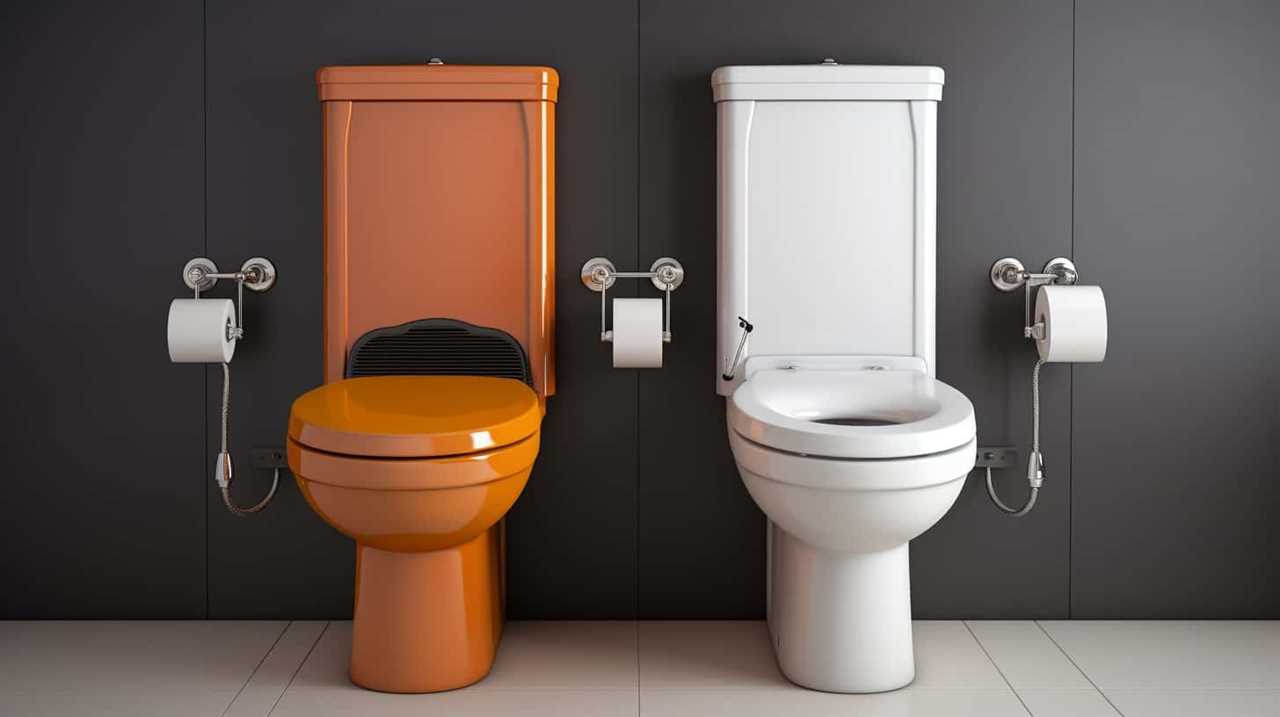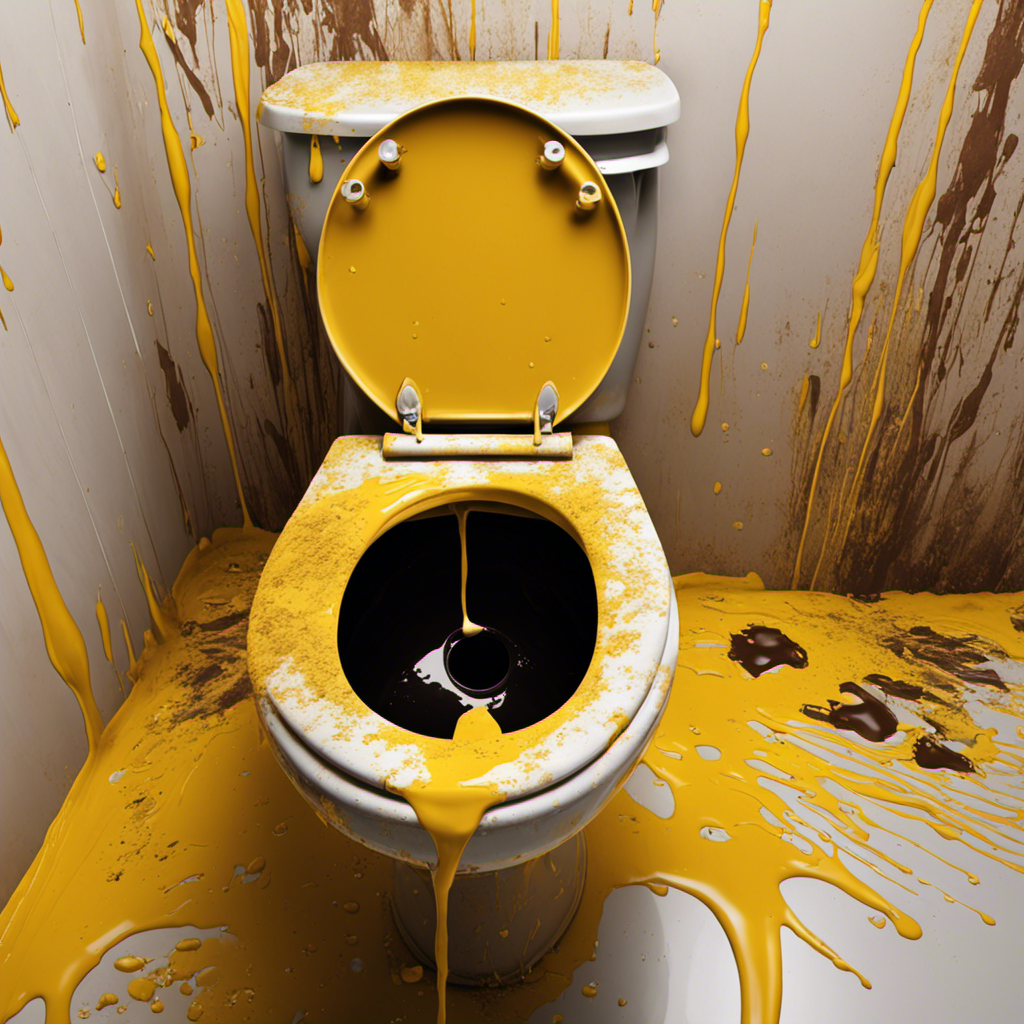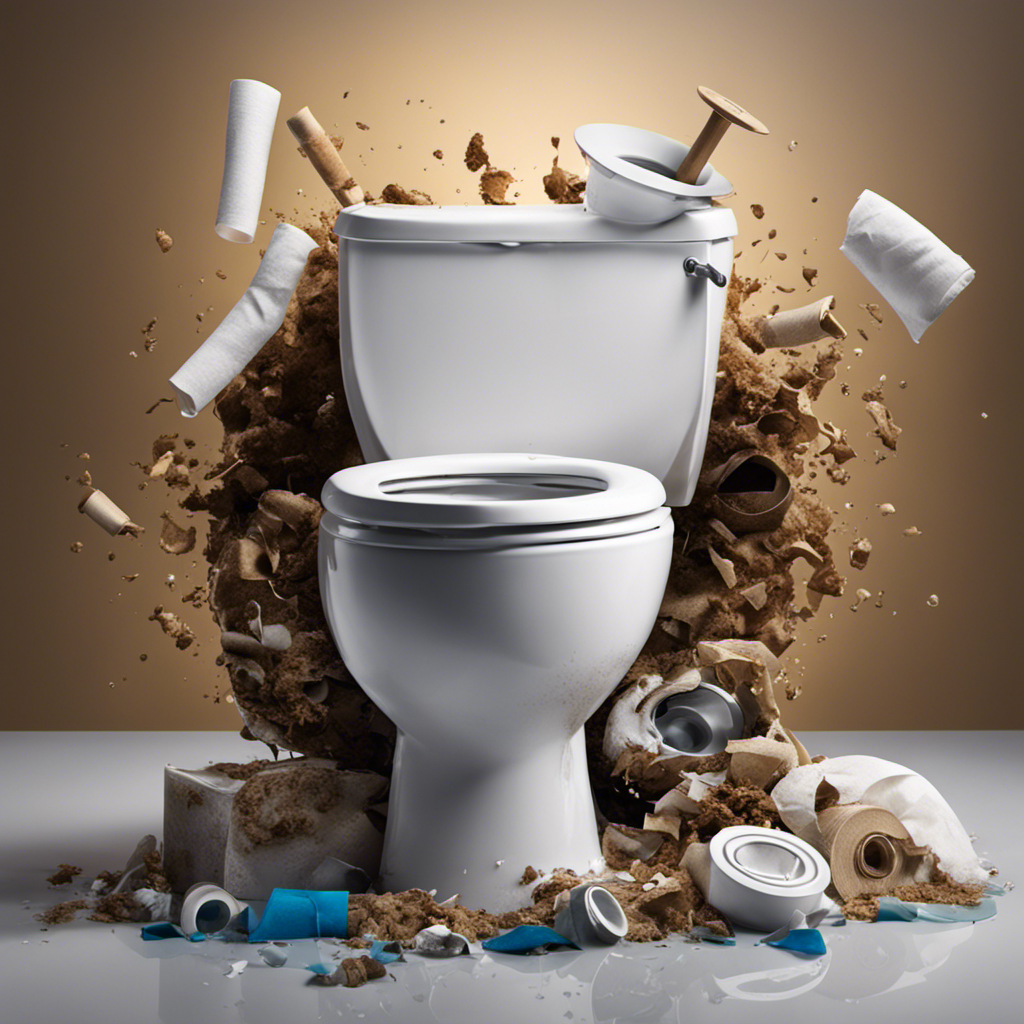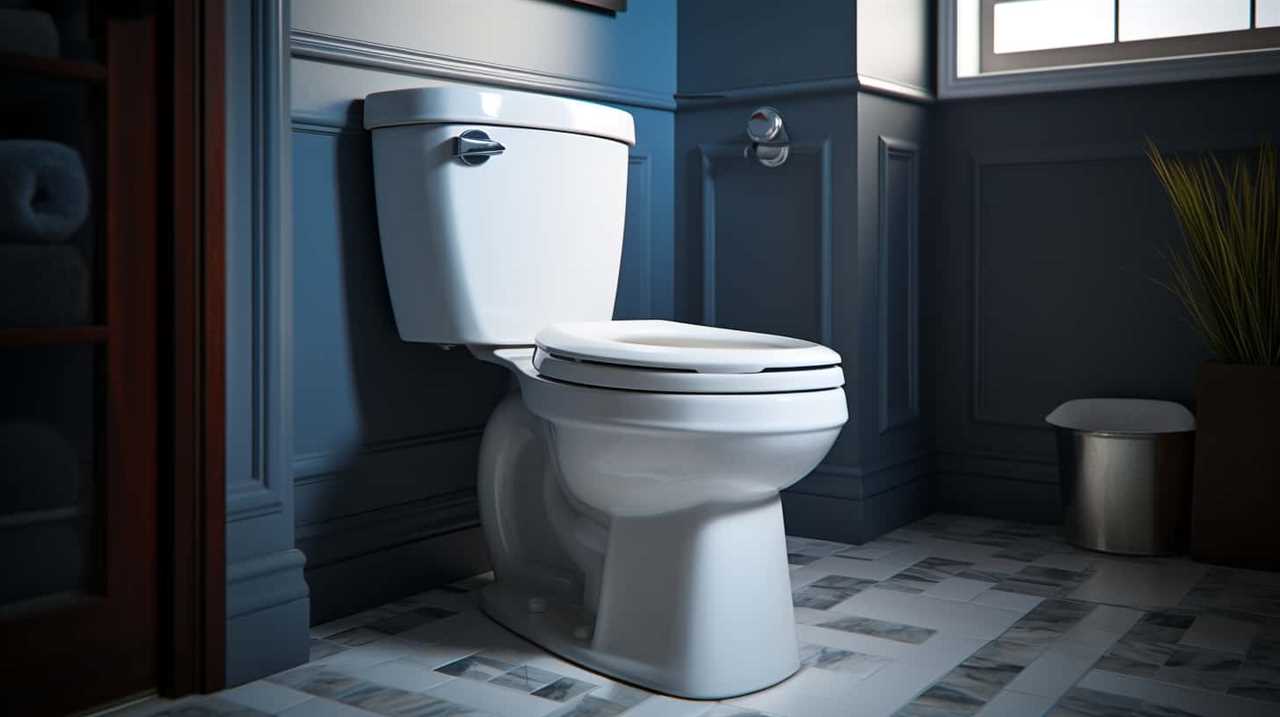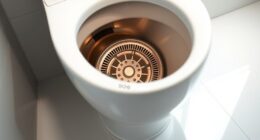We’re all familiar with the phrase, ‘If it’s yellow, let it mellow; if it’s brown, flush it down.’
But have you ever wondered how much water is actually being wasted every time we flush the toilet?
In this article, we will delve into the data to understand the true cost of flushing and explore ways to minimize water usage.
Get ready to master the art of water-efficient toilet flushing and save both the environment and your wallet.

Key Takeaways
- Flushing efficiency is crucial for conserving water in toilets.
- Different types of toilets have varying water consumption levels.
- Water-saving technologies like adjustable flush valves can enhance flushing efficiency.
- Water-efficient toilets result in significant cost savings for households.
The Importance of Flushing Efficiency
Flushing efficiency plays a crucial role in conserving water when using the toilet. By utilizing effective toilet flushing techniques, we can adopt water conservation strategies that significantly reduce our water consumption.
Let’s delve into the importance of flushing efficiency and how it contributes to water conservation.
To begin with, understanding the mechanics of toilet flushing is essential. Most toilets operate with a gravity-assisted flushing system, where water stored in the tank creates the necessary force to remove waste. Improper flushing techniques, such as quick half-flushes or unnecessary double-flushes, can lead to water wastage. By mastering the art of flushing, we can optimize water use without compromising cleanliness.
Data-driven studies have shown that a standard flush can consume approximately 1.6 gallons (6 liters) of water, while dual-flush toilets offer a low-flush option using only 0.8 gallons (3 liters). This significant difference in water usage underscores the importance of choosing the right toilet and understanding its features.

Additionally, employing water conservation strategies like installing adjustable flush valves or retrofitting existing toilets with dual-flush systems can further enhance flushing efficiency. These modifications allow users to select the appropriate flush volume based on the waste being eliminated, resulting in substantial water savings.
Understanding Water Consumption in Toilet Flushing
To continue our exploration of water conservation in toilet flushing, let’s delve into the factors that contribute to water consumption. Understanding how water is consumed in toilet flushing can help us identify ways to reduce water usage and contribute to water conservation efforts. Here are three important factors to consider:
- Toilet type: Different types of toilets have varying water consumption levels. Older toilets typically use more water per flush compared to newer, water-saving models. Upgrading to a water-saving toilet can significantly reduce water consumption.
- Flush volume: The volume of water used per flush also affects water consumption. Traditional toilets use around 6 gallons of water per flush, while newer models can use as little as 1.6 gallons. Adjusting the flush volume to match the waste being flushed can further reduce water usage.
- Water-saving technologies: There are several water-saving technologies available for toilets. Dual-flush toilets allow users to choose between a full flush and a half flush, depending on the waste volume. Another technology is the use of pressure-assisted flush systems, which use pressurized air to improve flushing efficiency and reduce water consumption.
Understanding these factors and incorporating water-saving technologies can have a significant impact on water consumption in toilet flushing. This is crucial in the face of water scarcity, where every drop counts. By being mindful of our water usage and implementing water-saving measures, we can contribute to conserving this precious resource for future generations.
Factors Affecting Water Usage in Flushing
When it comes to flushing the toilet, several factors can impact water usage. One crucial factor is toilet design, as older models tend to use more water per flush compared to newer, water-saving designs.

Another factor is the flush volume options available, with toilets offering different settings for liquid waste and solid waste.
Additionally, homeowners can opt for water-saving alternatives such as dual-flush toilets or installing toilet tank bags to reduce water consumption during flushing.
Toilet Design Impact
In our study, we analyzed the toilet design impact on water usage during flushing. The efficiency of a toilet’s design plays a significant role in determining the amount of water consumed with each flush.
Here are three key factors that can affect toilet water consumption and flushing efficiency:
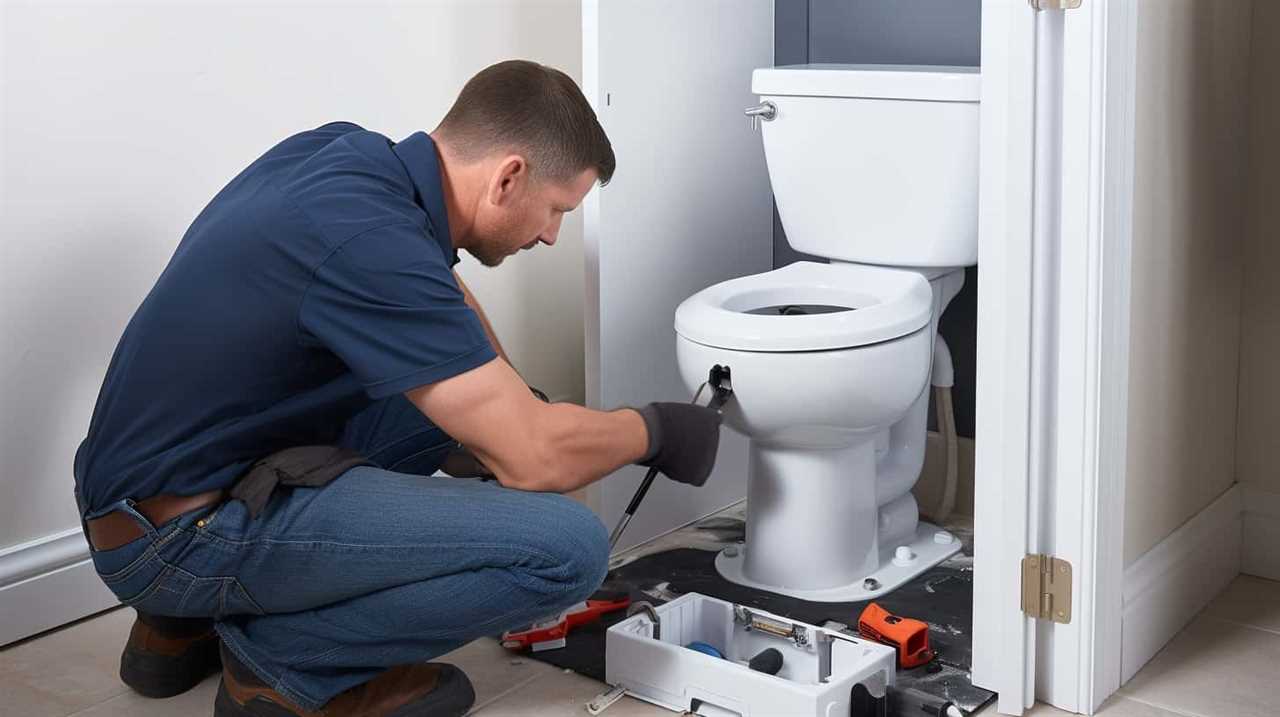
- Flush volume: The volume of water released during each flush can vary depending on the toilet design. Older toilets typically use more water per flush, while newer models incorporate water-saving features, such as dual-flush systems or low-flow mechanisms, to reduce water consumption.
- Bowl shape and size: The shape and size of the toilet bowl can influence the efficiency of the flush. A well-designed bowl helps to create a powerful siphoning effect, effectively removing waste with minimal water usage.
- Flapper valve quality: The flapper valve, located inside the toilet tank, controls the release of water during flushing. A worn or faulty flapper valve can lead to water leaks and unnecessary water consumption.
Flush Volume Options
Considering the impact of toilet design on water usage, let’s delve into the flush volume options and the factors that influence water consumption during flushing. To understand the various options available, we must examine toilet flush technology and water conservation initiatives.
One significant factor affecting water usage in flushing is the flush volume. Traditionally, toilets used a flush volume of around 3.5 to 7 gallons per flush (gpf). However, with advancements in technology and growing concerns about water conservation, toilets now offer lower flush volume options. These options typically range from 1.6 gpf to as low as 0.8 gpf, significantly reducing water usage.
To help you better understand the flush volume options and their impact on water consumption, here’s a table showcasing the different flush volumes and their corresponding water usage:
| Flush Volume (gpf) | Water Usage (gallons) |
|---|---|
| 3.5 – 7 | High |
| 1.6 | Moderate |
| 0.8 | Low |
As we can see, opting for a lower flush volume can lead to substantial water savings. Now, let’s explore some water-saving alternatives that can further contribute to conservation efforts.
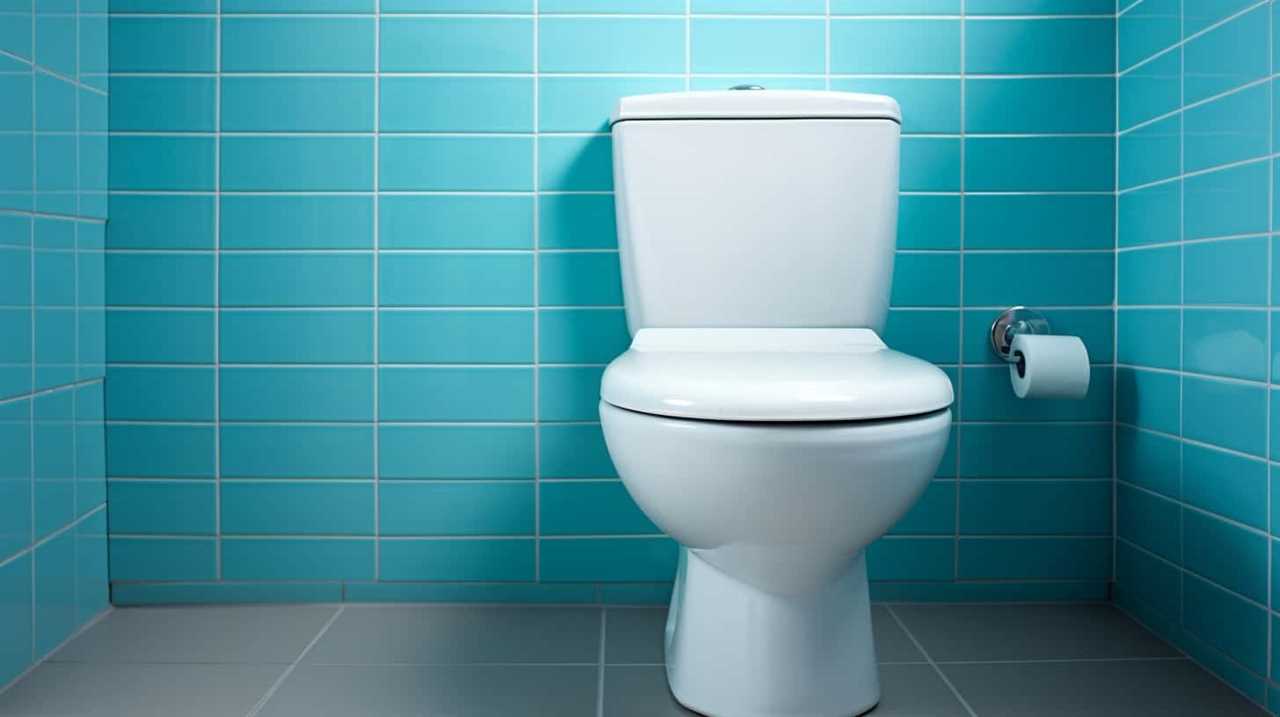
Water-Saving Alternatives
To further reduce water usage in flushing, let’s explore some water-saving alternatives and the factors that impact water consumption.
Here are three eco-friendly options and water-saving technologies that can help minimize water usage:
- Dual-flush toilets: These innovative toilets have two flushing options – a low-volume flush for liquid waste and a higher-volume flush for solid waste. By choosing the appropriate flush, you can significantly reduce water consumption.
- Water-efficient toilet models: Look for toilets that meet the WaterSense label requirements. These toilets use advanced flushing mechanisms and design features to optimize water usage, saving up to 20% more water compared to standard toilets.
- Toilet tank retrofit kits: Installing retrofit kits can help improve the efficiency of older toilets. These kits typically include devices like adjustable flappers, fill valves, and dual-flush mechanisms, allowing you to control water usage without replacing the entire toilet.
How Much Water Is Wasted in Each Flush
When we flush the toilet, a significant amount of water is wasted with each flush. It is important to understand how much water is being wasted in order to find ways to conserve this valuable resource. To illustrate this, let’s take a look at the following table that compares the average water usage of different types of toilets:
| Toilet Type | Average Water Usage per Flush |
|---|---|
| Standard Toilets | 1.6 gallons |
| Dual Flush Toilets | 0.8/1.6 gallons |
| High-Efficiency Toilets | 1.28 gallons |
As we can see from the table, standard toilets use an average of 1.6 gallons of water per flush. This can add up to a significant amount of water wasted over time, especially in households with multiple occupants. Dual flush toilets offer a more water-efficient option, with the ability to choose between a lower flush for liquid waste and a higher flush for solid waste. High-efficiency toilets, on the other hand, are designed to use only 1.28 gallons of water per flush, making them the most water-saving option available.

Ways to Minimize Water Usage in Toilet Flushing
To minimize water usage in toilet flushing, we can employ the use of water-saving techniques. Here are three effective water conservation techniques and toilet flushing hacks:
- Install a dual-flush toilet: Dual-flush toilets have two buttons or handles, allowing you to choose between a partial flush for liquid waste and a full flush for solid waste. By using the appropriate flush option, you can significantly reduce water wastage.
- Adjust the toilet fill valve: The fill valve controls the water level in the toilet tank. By adjusting it to a lower level, you can reduce the amount of water used for each flush. Consult the manufacturer’s instructions or seek professional assistance to ensure it’s set correctly.
- Place a water displacement device in the toilet tank: You can use various objects, such as a filled plastic bottle or a toilet dam, to displace water in the tank. This reduces the amount of water needed to fill the tank after each flush, resulting in water savings.
Implementing these water-saving techniques and toilet flushing hacks can help you minimize water usage without compromising on functionality. By being mindful of our water consumption, we can contribute to a more sustainable future.
The Cost Savings of Water-Efficient Toilets
Water-efficient toilets can result in significant cost savings for households. These toilets are designed to use less water per flush compared to traditional models, reducing both water consumption and utility bills. According to the Environmental Protection Agency (EPA), water-efficient toilets can save an average household up to 13,000 gallons of water per year. This translates into a cost benefit, as households can save hundreds of dollars annually on their water bills.
The cost savings of water-efficient toilets extend beyond the immediate benefits for individual households. These toilets also have a positive environmental impact. By conserving water, they help reduce the strain on water resources and promote sustainable water management. Additionally, water-efficient toilets contribute to reducing the energy required for water treatment and distribution. This reduction in energy consumption further reduces greenhouse gas emissions, helping to combat climate change.
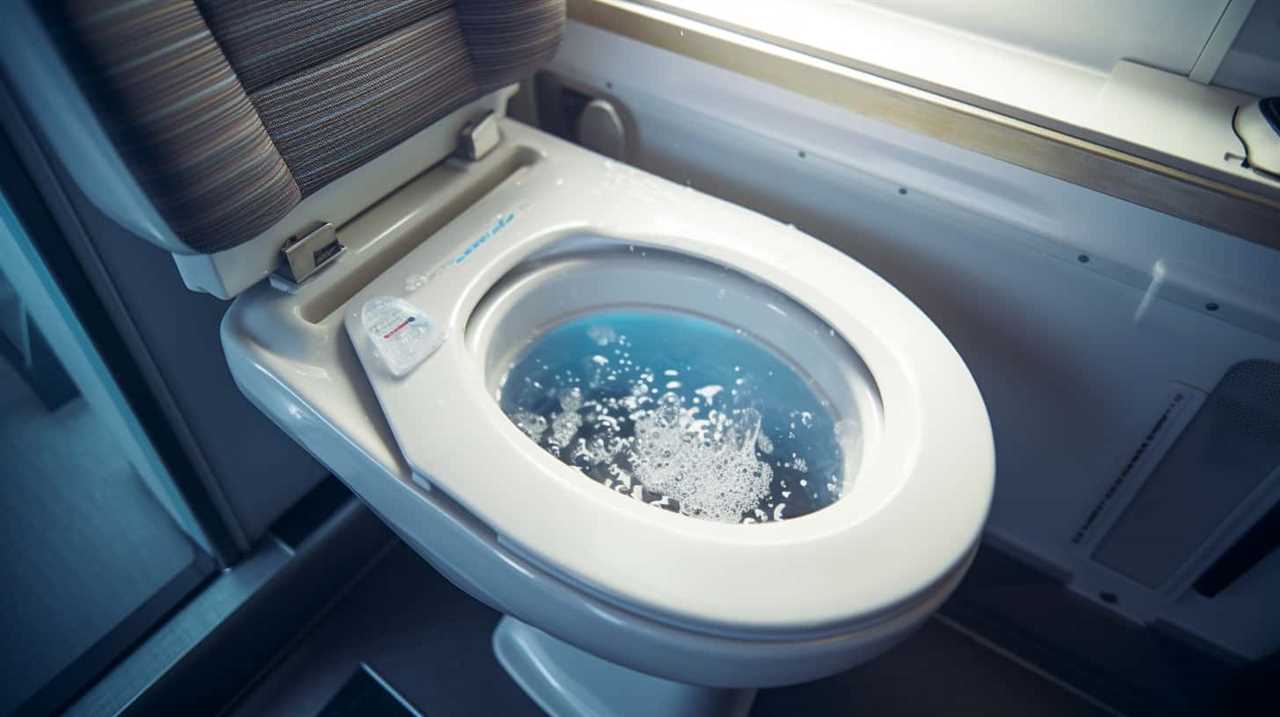
Investing in water-efficient toilets is a wise financial choice for homeowners, as the cost benefits are clear. Not only do they save money on water bills, but they also contribute to a more sustainable and environmentally friendly future. By choosing water-efficient toilets, households can actively participate in conserving water resources and mitigating the impacts of climate change, all while enjoying the financial savings that come with it.
Frequently Asked Questions
How Does Flushing Efficiency Impact Water Consumption in Toilets?
When considering the impact of flushing efficiency on water consumption in toilets, it’s crucial to analyze the role of toilet flushing technology and water-saving strategies.
By optimizing the flushing mechanism and implementing water-saving features such as dual-flush systems and low-flow toilets, we can significantly reduce water usage.
These advancements in toilet design not only enhance flushing efficiency but also contribute to sustainable water management.

Therefore, understanding the relationship between flushing efficiency and water consumption is essential for implementing effective water conservation measures.
What Are the Factors That Can Affect the Amount of Water Used in Toilet Flushing?
When it comes to the factors that impact the amount of water used in toilet flushing, efficiency is key.
Various elements, such as the type of toilet, the flush volume, and the condition of the plumbing system, can all play a role in water consumption.
Understanding these factors is crucial for optimizing water usage and reducing waste.
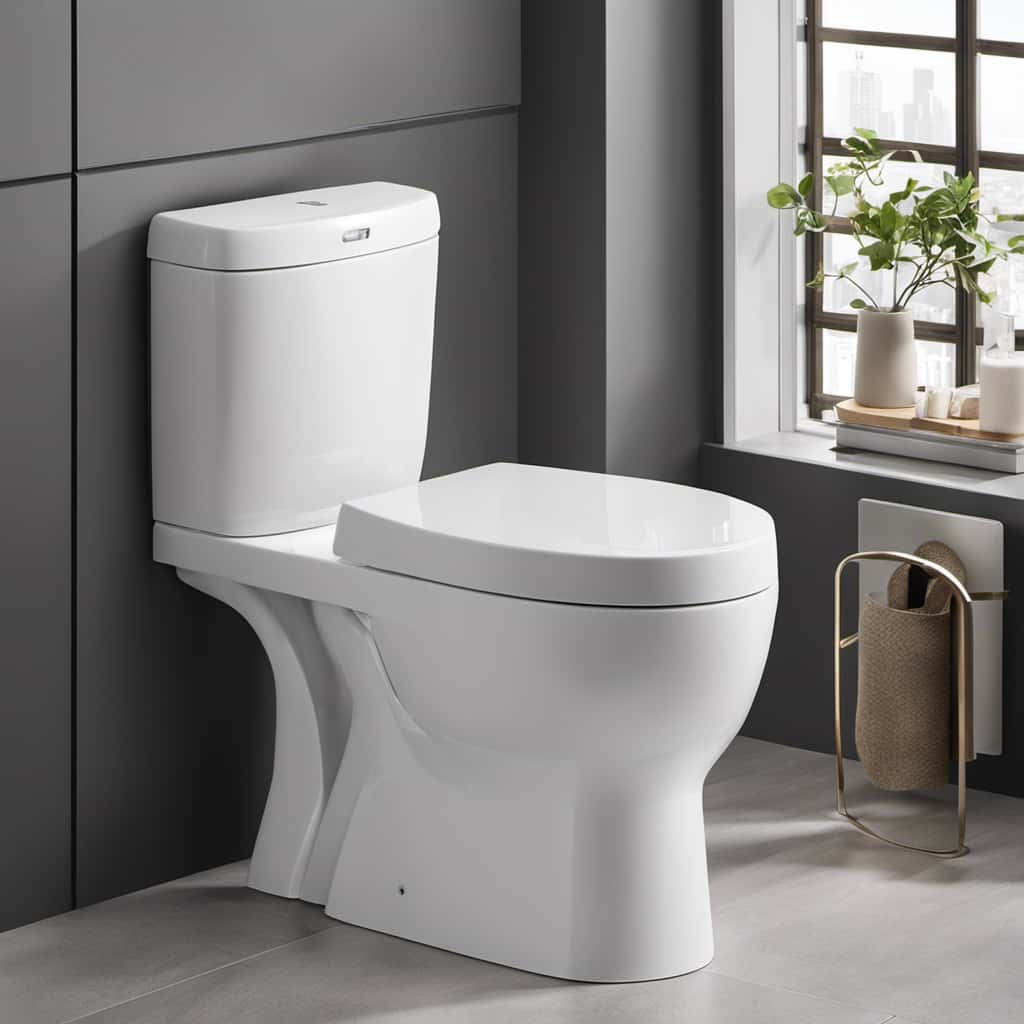
Is There a Significant Amount of Water Wasted in Each Flush?
Toilet flushing has a significant impact on water conservation and the environment. Each flush does result in a certain amount of water being wasted. It’s important to consider the volume of water used in each flush and how it adds up over time.
Are There Any Ways to Minimize Water Usage in Toilet Flushing?
Toilet water saving tips and eco-friendly toilet options can help minimize water usage in flushing. By incorporating dual-flush toilets, which allow for different water volumes based on waste type, households can save up to 50% more water compared to traditional toilets.
Other strategies include installing water-saving devices like toilet tank bags or adjustable flapper valves. These simple yet effective measures can contribute to water conservation efforts and promote sustainability in our daily lives.
How Much Cost Savings Can Be Achieved by Using Water-Efficient Toilets?
Are water-efficient toilets really cost effective?
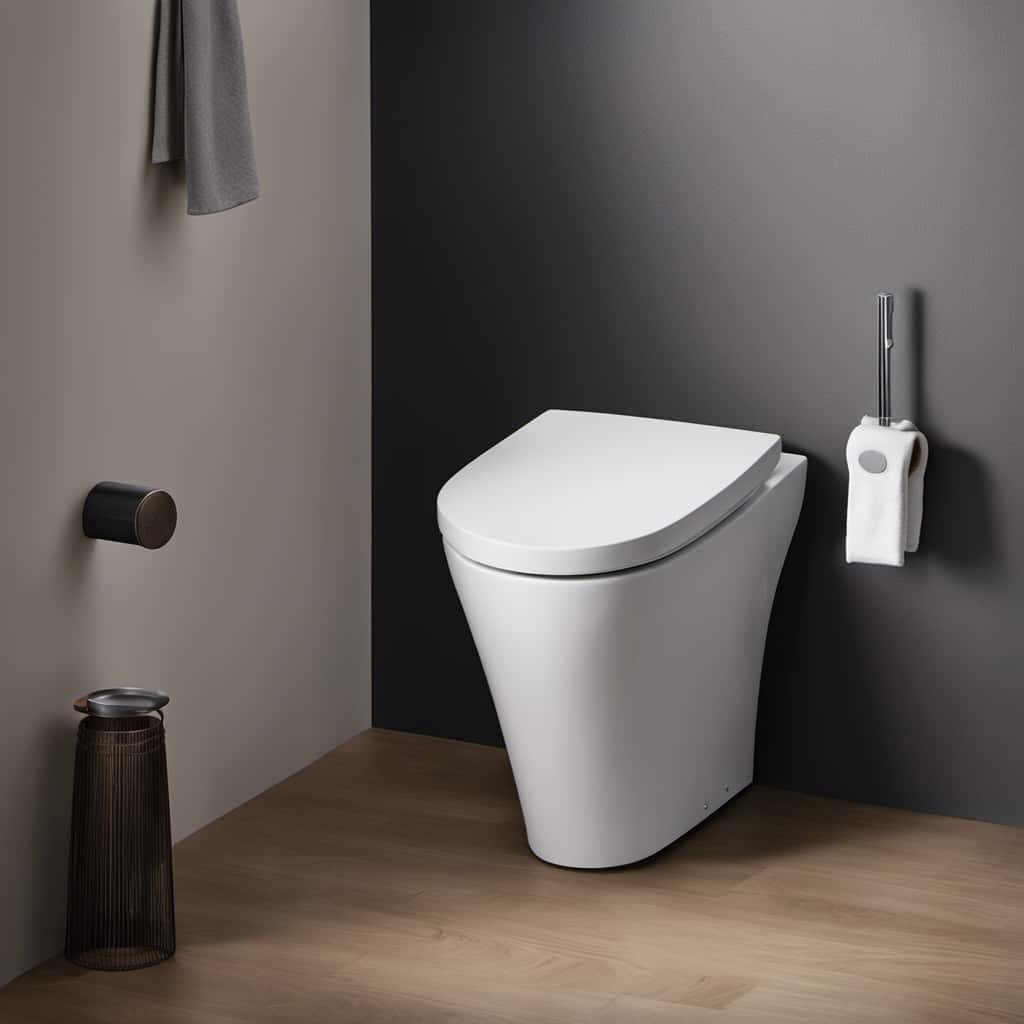
We analyzed the data and found that they can lead to significant cost savings. By using less water per flush, these toilets help reduce water bills in the long run.
Not only that, but they also have a positive impact on the environment by conserving water resources.
Conclusion
In conclusion, understanding the impact of flushing toilets on water consumption is essential for promoting water efficiency.
By considering factors such as toilet design, flush volume, and user behavior, significant reductions in water usage can be achieved.

Implementing water-saving measures, such as using dual-flush toilets or installing water-efficient models, can result in substantial cost savings and contribute to overall conservation efforts.
It’s crucial to prioritize water efficiency in our daily routines to ensure a sustainable future.

